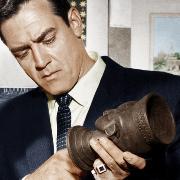- gradenko_2000
- Oct 5, 2010
-

HELL SERPENT
-
Lipstick Apathy
|
quick follow-up to this:
code:https://twitter.com/christapeterso/status/1730717050686025924
The New Yorker: A British Nurse Was Found Guilty of Killing Seven Babies. Did She Do It?
(supposedly the article is literally blocked from being accessible in the UK. I am reposting the full text here, in two parts)
quote:Colleagues reportedly called Lucy Letby an “angel of death,” and the Prime Minister condemned her. But, in the rush to judgment, serious questions about the evidence were ignored.
By Rachel Aviv
May 13, 2024
Last August, Lucy Letby, a thirty-three-year-old British nurse, was convicted of killing seven newborn babies and attempting to kill six others. Her murder trial, one of the longest in English history, lasted more than ten months and captivated the United Kingdom. The Guardian, which published more than a hundred stories about the case, called her “one of the most notorious female murderers of the last century.” The collective acceptance of her guilt was absolute. “She has thrown open the door to Hell,” the Daily Mail wrote, “and the stench of evil overwhelms us all.”
The case galvanized the British government. The Health Secretary immediately announced an inquiry to examine how Letby’s hospital had failed to protect babies. After Letby refused to attend her sentencing hearing, the Justice Secretary said that he’d work to change the law so that defendants would be required to go to court to be sentenced. Rishi Sunak, the Prime Minister, said, “It’s cowardly that people who commit such horrendous crimes do not face their victims.”
The public conversation rushed forward without much curiosity about an incongruous aspect of the story: Letby appeared to have been a psychologically healthy and happy person. She had many close friends. Her nursing colleagues spoke highly of her care and dedication. A detective with the Cheshire police, which led the investigation, said, “This is completely unprecedented in that there doesn’t seem to be anything to say” about why Letby would kill babies. “There isn’t really anything we have found in her background that’s anything other than normal.”
The judge in her case, James Goss, acknowledged that Letby appeared to have been a “very conscientious, hard working, knowledgeable, confident and professional nurse.” But he also said that she had embarked on a “calculated and cynical campaign of child murder,” and he sentenced her to life, making her only the fourth woman in U.K. history condemned to die in prison. Although her punishment can’t be increased, she will face a second trial, this June, on an attempted-murder charge for which the jury could not reach a verdict.
Letby had worked on a struggling neonatal unit at the Countess of Chester Hospital, run by the National Health Service, in the West of England, near Wales. The case centered on a cluster of seven deaths, between June, 2015, and June, 2016. All but one of the babies were premature; three of them weighed less than three pounds. No one ever saw Letby harming a child, and the coroner did not find foul play in any of the deaths. (Since her arrest, Letby has not made any public comments, and a court order has prohibited most reporting on her case. To describe her experiences, I drew from more than seven thousand pages of court transcripts, which included police interviews and text messages, and from internal hospital records that were leaked to me.)
The case against her gathered force on the basis of a single diagram shared by the police, which circulated widely in the media. On the vertical axis were twenty-four “suspicious events,” which included the deaths of the seven newborns and seventeen other instances of babies suddenly deteriorating. On the horizontal axis were the names of thirty-eight nurses who had worked on the unit during that time, with X’s next to each suspicious event that occurred when they were on shift. Letby was the only nurse with an uninterrupted line of X’s below her name. She was the “one common denominator,” the “constant malevolent presence when things took a turn for the worse,” one of the prosecutors, Nick Johnson, told the jury in his opening statement. “If you look at the table overall the picture is, we suggest, self-evidently obvious. It’s a process of elimination.”
But the chart didn’t account for any other factors influencing the mortality rate on the unit. Letby had become the country’s most reviled woman—“the unexpected face of evil,” as the British magazine Prospect put it—largely because of that unbroken line. It gave an impression of mathematical clarity and coherence, distracting from another possibility: that there had never been any crimes at all.
Since Letby was a teen-ager, she had wanted to be a nurse. “She’d had a difficult birth herself, and she was very grateful for being alive to the nurses that would have helped save her life,” her friend Dawn Howe told the BBC. An only child, Letby grew up in Hereford, a city north of Bristol. In high school, she had a group of close friends who called themselves the “miss-match family”: they were dorky and liked to play games such as Cranium and Twister. Howe described Letby as the “most kind, gentle, soft friend.” Another friend said that she was “joyful and peaceful.”
Letby was the first person in her family to go to college. She got a nursing degree from the University of Chester, in 2011, and began working on the neonatal unit at the Countess of Chester Hospital, where she had trained as a student nurse. Chester was a hundred miles from Hereford, and her parents didn’t like her being so far away. “I feel very guilty for staying here sometimes but it’s what I want,” she told a colleague in a text message. She described the nursing team at the Countess as “like a little family.” She spent her free time with other nurses from the unit, often appearing in pictures on Facebook in flowery outfits and lip gloss, with sparkling wine in her hand and a guileless smile. She had straight blond hair, the color washing out as she aged, and she was unassumingly pretty.
The unit for newborns was built in 1974, and it was outdated and cramped. In 2012, the Countess launched a campaign to raise money to build a new one, a process that ended up taking nine years. “Neonatal intensive care has improved in recent years but requires more equipment which we have very little space for,” Stephen Brearey, the head of the unit, told the Chester Standard. “The risks of infection for the babies is greater, the closer they are to each other.” There were also problems with the drainage system: the pipes in both the neonatal ward and the maternity ward often leaked or were blocked, and sewage occasionally backed up into the toilets and sinks.
The staff were also overtaxed. Seven senior pediatricians, called consultants, did rounds on the unit, but only one was a neonatologist—a specialist in the care of newborns. An inquest for a newborn who died in 2014, a year before the deaths for which Letby was charged, found that doctors had inserted a breathing tube into the baby’s esophagus rather than his trachea, ignoring several indications that the tube was misplaced. “I find it surprising these signs were not realised,” the coroner said, according to the Daily Express. The boy’s mother told the paper that “staff shortages meant blood tests and X-rays were not assessed for seven hours and there was one doctor on duty who was splitting his time between the neonatal ward and the children’s ward.”
The N.H.S. has a totemic status in the British psyche—it’s the “closest thing the English have to a religion,” as one politician has put it. One of the last remnants of the postwar social contract, it inspires loyalty and awe even as it has increasingly broken down, partly as a result of years of underfunding. In 2015, the infant-mortality rate in England and Wales rose for the first time in a century. A survey found that two-thirds of the country’s neonatal units did not have enough medical and nursing staff. That year, the Countess treated more babies than it had in previous years, and they had, on average, lower birth weights and more complex medical needs. Letby, who lived in staff housing on the hospital grounds, was twenty-five years old and had just finished a six-month course to become qualified in neonatal intensive care. She was one of only two junior nurses on the unit with that training. “We had massive staffing issues, where people were coming in and doing extra shifts,” a senior nurse on the unit said. “It was mainly Lucy that did a lot.” She was young, single, and saving to buy a house. That year, when a friend suggested that she take some time off, Letby texted her, “Work is always my priority.”
In June, 2015, three babies died at the Countess. First, a woman with antiphospholipid syndrome, a rare disorder that can cause blood clotting, was admitted to the hospital. She was thirty-one weeks pregnant with twins, and had planned to give birth in London, so that a specialist could monitor her and the babies, but her blood pressure had quickly risen, and she had to have an emergency C-section at the Countess. The next day, Letby was asked to cover a colleague’s night shift. She was assigned one of the twins, a boy, who has been called Child A. (The court order forbade identifying the children, their parents, and some nurses and doctors.) A nursing note from the day shift said that the baby had had “no fluids running for a couple of hours,” because his umbilical catheter, a tube that delivers fluids through the abdomen, had twice been placed in the wrong position, and “doctors busy.” A junior doctor eventually put in a longline, a thin tube threaded through a vein, and Letby and another nurse gave the child fluid. Twenty minutes later, Letby and a third nurse, a few feet away, noticed that his oxygen levels were dropping and that his skin was mottled. The doctor who had inserted the longline worried that he had placed it too close to the child’s heart, and he immediately took it out. But, less than ninety minutes after Letby started her shift, the baby was dead. “It was awful,” she wrote to a colleague afterward. “He died very suddenly and unexpectedly just after handover.”
A pathologist observed that the baby had “crossed pulmonary arteries,” a structural anomaly, and there was also a “strong temporal relationship” between the insertion of the longline and the collapse. The pathologist described the cause of death as “unascertained.”
Letby was on duty again the night after Child A’s death. At around midnight, she helped the nurse who had been assigned to the surviving twin, a girl, set up her I.V. bag. About twenty-five minutes later, the baby’s skin became purple and blotchy, and her heart rate dropped. She was resuscitated and recovered. Brearey, the unit’s leader, told me that at the time he wondered if the twins had been more vulnerable because of the mother’s disorder; antibodies for it can pass through the placenta.
The next day, a mother who had been diagnosed as having a dangerous placenta condition gave birth to a baby boy who weighed one pound, twelve ounces, which was on the edge of the weight threshold that the unit was certified to treat. Within four days, the baby developed acute pneumonia. Letby was not working in the intensive-care nursery, where the baby was treated, but after the child’s oxygen alarm went off she came into the room to help. Yet the staff on the unit couldn’t save the baby. A pathologist determined that he had died of natural causes.
Several days later, a woman came to the hospital after her water broke. She was sent home and told to wait. More than twenty-four hours later, she noticed that the baby was making fewer movements inside her. “I was concerned for infection because I hadn’t been given any antibiotics,” she said later. She returned to the hospital, but she still wasn’t given antibiotics. She felt “forgotten by the staff, really,” she said. Sixty hours after her water broke, she had a C-section. The baby, a girl who was dusky and limp when she was born, should have been treated with antibiotics immediately, doctors later acknowledged, but nearly four hours passed before she was given the medication. The next night, the baby’s oxygen alarm went off. “Called Staff Nurse Letby to help,” a nurse wrote. The baby continued to deteriorate throughout the night and could not be revived. A pathologist found pneumonia in the baby’s lungs and wrote that the infection was likely present at birth.
“We lost [her],” Letby texted a close friend I’ll call Margaret, a shift leader on the unit. Margaret had mentored Letby when she was a student training on the ward.
“What!!!!! But she was improving,” Margaret replied. “What happened? Wanna chat? I can’t believe you were on again. You’re having such a tough time.”
Letby told Margaret that the circumstances of the death might be investigated.
“What, the delay in treatment?”
“Just overall,” she said. “And reviewing what antibiotics she was on, etc., if it is sepsis.” Letby wrote that she was still in shock. “Feel a bit numb.”
“Oh hun, you need a break,” Margaret said. Reflecting on the first of the three deaths, Margaret told her that the baby’s parents would always grieve the loss of their child but that, because of the way Letby had cared for him, they’d hopefully have no regrets about the time they spent with their son. “Just trying to help you take the positives you deserve from tough times,” Margaret wrote. “Always here. Speak later. Sleep well xxx.”
A few days later, Letby couldn’t stop crying. “It’s all hit me,” she texted another friend from the unit. She wrote that two of the deaths seemed comprehensible (one was “tiny, obviously compromised in utero,” and the other seemed septic, she wrote), but “it’s [Child A] I can’t get my head around.”
The senior pediatricians met to review the deaths, to see if there were any patterns or mistakes. “One of the problems with neonatal deaths is that preterm babies can die suddenly and you don’t always get the answer immediately,” Brearey told me. A study of about a thousand infant deaths in southeast London, published in The Journal of Maternal-Fetal & Neonatal Medicine, found that the cause of mortality was unexplained for about half the newborns who had died unexpectedly, even after an autopsy. Brearey observed that Letby was involved in each of the deaths at the Countess, but “it didn’t sound to me like the odds were that extreme of having a nurse present for three of those cases,” he said. “Nobody had any concerns about her practice.”
The head of the pediatrics department, Ravi Jayaram, told me, “There was an element of ‘Thank God Lucy was on,’ because she’s really good in a crisis.” He described Letby as “very popular” among the nurses. To make sense of the events, Jayaram said, “you sort of think, Well, maybe the baby wasn’t as stable as we thought, and maybe that longline was in just a bit far, and it got into the heart and caused a heart-rhythm problem. You try and make things fit, because we like to have an explanation—for us and for the parents—and it’s much harder to say, ‘I’m sorry. I don’t know what went on.’ ”
Four months later, another baby died. She had been born at twenty-seven weeks, just past the age that the unit treated. At one point, she was transferred to another hospital, called Arrowe Park, for more specialized care—she had an infection and a small bleed in her brain—but after two nights she returned to the Countess, where her condition deteriorated. Brearey told me, “Senior nursing staff were blaming the neonatal unit that sent back the baby, saying that they hadn’t been entirely honest, that they were just trying to clear a space.” The baby’s mother worried that the staff at the Countess were too busy to pay proper attention to her daughter. She recalled that a nurse named Nicky was “sneezing and coughing whilst putting her hands in [the baby’s] incubator.” She added, “To top it off, whilst Nicky was in the room, the doctor, who was seeing another baby, asked Nicky if she was full of a cold, to which she said, ‘Yeah, I’ve been full of it for days.’ So even the doctors were aware and didn’t do anything.” In a survey the next year of more than a thousand staff members at the Countess, about two-thirds said that they had felt pressure to come to work even when they were ill. (None of the hospitals mentioned in this piece would comment, citing the court order.)
The staff tried to send the girl to a specialized unit at a different hospital, but, while they were waiting to confirm the transfer, she began struggling to breathe. Her designated nurse was not yet trained in intensive care, and she shouted for help. Letby, who had been assigned to a different baby, came into the room, followed by two doctors, but the baby continued to decline and could not be revived.
A doctor later saw Letby crying with another nurse. “It was very much on the gist of ‘It’s always me when it happens, my babies,’ ” the doctor said, adding that this seemed like a normal reaction. Letby texted Margaret that she had spoken with the neonatal-unit manager, Eirian Powell, who had encouraged her to “be confident in my role without feeling the need to prove myself, which I have felt recently.”
Three of the nurses on the ward attended the baby’s funeral, and Letby gave them a card addressed to the child’s parents. “It was a real privilege to care for [her] and to get to know you as a family, a family who always put [her] first and did everything possible for her,” she wrote. “She will always be a part of your lives and we will never forget her. Thinking of you today and always.”
Jayaram, who was on duty during the girl’s death, discussed the events with Brearey and another pediatrician. “ ‘You know what’s funny?’ ” he said that he told them. “ ‘It was Lucy Letby who was on.’ And we all looked at each other and said, ‘You know, it’s always Lucy, isn’t it?’ ”
They shared their concerns about the correlation with senior management, and Powell conducted an informal review. “I have devised a document to reflect the information clearly and it is unfortunate she was on,” she wrote to Brearey. “However each cause of death was different.”
The next month, Letby, who was in a salsa group, got out of class and saw three missed calls: the nurses on the unit had called her because they didn’t know how to give a baby intravenous immunoglobulin treatment. “Just can’t believe that some people were in a position when they don’t know how to give something, what equipment to use and not being supported by manager,” Letby texted her best friend, a nurse I’ll call Cheryl. “Staffing really needs looking at.” She described the unit as “chaos” and a “madhouse.”
One of the senior pediatricians, Alison Timmis, was similarly distressed. She e-mailed the hospital’s chief executive, Tony Chambers, to complain that staff on the unit were “chronically overworked” and “no one is listening.” She wrote, “Over the past few weeks I have seen several medical and nursing colleagues in tears.” Doctors were working shifts that ran more than twenty hours, she explained, and the unit was so busy that “at several points we ran out of vital equipment such as incubators.” At another point, a midwife had to assist with a resuscitation, because there weren’t enough trained nurses. “This is now our normal working pattern and it is not safe,” Timmis wrote. “Things are stretched thinner and thinner and are at breaking point. When things snap, the casualties will either be children’s lives or the mental and physical health of our staff.”
At the end of January, 2016, the senior pediatricians met with a neonatologist at a nearby hospital, to review the ward’s mortality data. In 2013 and 2014, the unit had had two and three deaths, respectively. In 2015, there had been eight. At the meeting, “there were a few learning points, nothing particularly exciting,” Brearey recalled. Near the end, he asked the neonatologist what he thought about the fact that Letby was present for each death. “I can’t remember him suggesting anything, really,” Brearey said.
But Jayaram and Brearey were increasingly troubled by the link. “It was like staring at a Magic Eye picture,” Jayaram told me. “At first, it’s just a load of dots,” and the dots are incoherent. “But you stare at them, and all of a sudden the picture appears. And then, once you can see that picture, you see it every time you look, and you think, How the hell did I miss that?” By the spring of 2016, he said, he could not “unsee it.”
Many of the deaths had occurred at night, so Powell, the unit manager, shifted Letby primarily to day shifts, because there would be “more people about to be able to support her,” she said.
In June, 2016, three months after the change, Cheryl texted Letby before a shift, “I wouldn’t come in!”
“Oh, why?” Letby responded.
“Five admissions, 1 vent.”
“OMG,” Letby responded.
Cheryl added that a premature boy with hemophilia looked “like poo poo.” His oxygen levels had dropped during the night. Letby took over his care that morning, and doctors tried to intubate him, but they were unable to insert the tube, so they called two anesthesiologists, who couldn’t do it, either. The hospital didn’t have any factor VIII, an essential medicine for hemophiliacs. Finally, they asked a team from Alder Hey Children’s Hospital, which was thirty miles away, to come to the hospital with factor VIII. A doctor from Alder Hey intubated the child on the first try. “Sat having a quiet moment and want to cry,” Letby wrote to a junior doctor, whom I’ll call Taylor, who had become a close friend. “Just feel like I’ve been running around all day and not really achieved anything positive for him.”
A week later, a mother gave birth to identical triplet boys, born at thirty-three weeks. When she was pregnant, the mother said, she had been told that each baby would have his own nurse, but Letby, who had just returned from a short trip to Spain with friends, was assigned two of the triplets, as well as a third baby from a different family. She was also training a student nurse who was “glued to me,” she complained to Taylor. Seven hours into Letby’s shift, one of the triplet’s oxygen levels dropped precipitously, and he developed a rash on his chest. Letby called for help. After two rounds of CPR, the baby died.
The next day, Letby was the designated nurse for the two surviving triplets. The abdomen of one of them appeared distended, a possible sign of infection. When she told Taylor, he messaged her, “I wonder if they’ve all been exposed to a bug that benzylpenicillin and gentamicin didn’t account for? Are you okay?”
“I’m okay, just don’t want to be here really,” Letby replied. The student nurse was still with her, and Letby told Taylor, “I don’t feel I’m in the frame of mind to support her properly.”
A doctor came to check on the triplet with the distended abdomen, and, while he was in the room, the child’s oxygen levels dropped. The baby was put on a ventilator, and the hospital asked for a transport team to take him to Liverpool Women’s Hospital. As they were waiting, it was discovered that the baby had a collapsed lung, possibly a result of pressure from the ventilation, which was set unusually high. “There was an increasing sense of anxiety on the unit,” Letby said later. “Nobody seemed to know what was happening and very much just wanted the transport team to come and offer their expertise.” The triplets’ mother said that she was alarmed when she saw a doctor sitting at a computer “Googling how to do what looked like a relatively simple medical procedure: inserting a line into the chest.” She was also upset that one of the doctors who was resuscitating her son was “coughing and spluttering into her hands” without washing them. Shortly after the transport team arrived, the second triplet died. His mother recalled that Letby was “in pieces and almost as upset as we were.”
While dressing the baby for his parents—a standard part of helping grieving families—Letby accidentally pricked her finger with a needle. She hadn’t eaten or taken a break all day, and as she was waiting to get her finger checked she fainted. “The overall enormity of the last two days had sort of taken its toll,” she said. “To imagine what those parents had gone through to lose two of their babies, it was harrowing.”
The surviving triplet was taken to Liverpool Women’s Hospital, and his mother felt that the clinical staff there were more competent and organized. “The two hospitals were as different as night and day,” she said.
That night, Brearey called Karen Rees, the head of nursing for urgent care, and said that he did not want Letby returning until there was an investigation. The babies’ deaths seemed to be following Letby from night to day. Rees discussed the issue with Powell, and she said that Powell told her, “Lucy Letby does everything by the book. She follows policy and procedure to the letter.” Rees allowed Letby to keep working. “Just because a senior healthcare professional requests the removal of a nurse—there has to be sound reason,” Rees said later.
The next day, Letby was assigned a baby boy, known as Child Q, who had a bowel infection. At one point, he was sent to Alder Hey, but he was transferred back within two days. Taylor texted Letby that Alder Hey was “so short of beds that they can only accommodate emergency patients. It’s not good holistic care, and it’s rubbish for his parents.”
Letby was also taking care of another newborn in a different room, and, while she was checking on that baby, Child Q vomited and his oxygen levels dropped. After he stabilized, John Gibbs, a senior pediatrician, asked another nurse which staff members had been present during the episode.
“Do I need to be worried about what Dr Gibbs was asking?” Letby texted Taylor after her shift.
“No,” he reassured her. “You can’t be with two babies in different nurseries at the same time, let alone predict when they’re going to crash.”
“I know, and I didn’t leave him on his own. They both knew I was leaving the room,” she said, referring to a nurse inside the room and one just outside.
“Nobody has accused you of neglecting a baby or causing a deterioration,” he said.
“I know. Just worry I haven’t done enough.”
“How?” he asked
“We’ve lost two babies I was caring for and now this happened today. Makes you think am I missing something/good enough,” she said.
“Lucy, if anyone knows how hard you’ve worked over the last 3 days it’s me,” he wrote. “If anybody says anything to you about not being good enough or performing adequately I want you to promise me that you’ll give my details to provide a statement.”
“Well I sincerely hope I won’t ever be needing a statement,” she said. “But thank you. I promise.”
Letby was supposed to work the next night, but at the last minute Powell called and told her not to come in. “I’m worried I’m in trouble or something,” Letby wrote to Cheryl.
“How can you be in trouble?” Cheryl replied. “You haven’t done anything wrong.”
“I know but worrying in case they think I missed something or whatever,” Letby said. “Why leave it until now to ring?”
“It’s very late, I agree,” Cheryl said. “Maybe she’s getting pressure from elsewhere.”
“She was nice enough, I just worry,” Letby responded. “This job messes with your head.”
Letby worked three more day shifts and then had a two-week vacation. Brearey, Jayaram, and a few other pediatric consultants met to discuss the unexpected deaths. “We were trying to rack our brains,” Brearey said. A postmortem X-ray of one of the babies had shown gas near the skull, a finding that the pathologist did not consider particularly meaningful, since gas is often present after death. Jayaram remembered learning in medical school about air embolisms—a rare, potentially catastrophic complication that can occur when air bubbles enter a person’s veins or arteries, blocking blood supply. That night, he searched for literature about the phenomenon. He did not see any cases of murder by air embolism, but he forwarded his colleagues a four-page paper, from 1989, in the Archives of Disease in Childhood, about accidental air embolism. The authors of the paper could find only fifty-three cases in the world. All but four of the infants had died immediately. In five cases, their skin became discolored. “I remember the physical chill that went down my spine,” Jayaram said. “It fitted with what we were seeing.”
Jayaram and another pediatrician met with the hospital’s executive board, as well as with the medical and nursing directors, and said that they were not comfortable working with Letby. They suggested calling the police. Jayaram said that the board members asked them, “ ‘What’s the evidence?’ And we said, ‘We haven’t got evidence, but we’ve got concerns.’ ” To relieve the general burden on the unit, the directors and the board decided to downgrade the ward from Level II to Level I: it would no longer provide intensive care, and women delivering before thirty-two weeks would now go to a different hospital. The board also agreed to commission a review by the Royal College of Paediatrics and Child Health, to explore what factors might explain the rise in mortality.
After Letby returned from vacation, she was called in for a meeting. The deputy director of nursing told her that she was the common element in the cluster of deaths, and that her clinical competence would need to be reassessed. “She was distraught,” Powell, the unit manager, who was also at the meeting, said. “We were both quite upset.” They walked straight from the meeting to human resources. “We were trying to get Lucy back on the unit, so we had to try and prove that the competency issue wasn’t the problem,” Powell said.
But Letby never returned to clinical duties. She was eventually moved to an administrative role in the hospital’s risk-and-safety office. Jayaram described the office as “almost an island of lost souls. If there was a nurse who wasn’t very good clinically, or a manager who they wanted to get out of the way, they’d move them to the risk-and-safety office.”
After she’d been away from clinical duties for more than a month, Letby texted Cheryl that she’d spoken with her union representative, who had advised her not to communicate with other staff, since they might be involved in reviewing her competence. “Feel a bit like I’m being shoved in a corner and forgotten about,” she wrote. “It’s my life and career.”
“I know it’s all so ridiculous,” Cheryl said.
“I can’t see where it will all end.”
“I’m sure this time after Christmas it’ll all be a distant memory,” Cheryl reassured her.
In September, 2016, Letby filed a grievance, saying that she’d been removed from her job without a clear explanation. “My whole world was stopped,” she said later. She was diagnosed with depression and anxiety and began taking medication. “From a self-confidence point of view it completely—well, it made me question everything about myself,” she said. “I just felt like I’d let everybody down, that I’d let myself down, that people were changing their opinion of me.”
That month, a team from the Royal College of Paediatrics and Child Health spent two days interviewing people at the Countess. They found that nursing- and medical-staffing levels were inadequate. They also noted that the increased mortality rate in 2015 was not restricted to the neonatal unit. Stillbirths on the maternity ward were elevated, too.
A redacted portion of the report, which was shared with me, described how staff on the unit were “very upset” that Letby had been removed from clinical duties. The Royal College team interviewed Letby and described her as “an enthusiastic, capable and committed nurse” who was “passionate about her career and keen to progress.” The redacted section concluded that the senior pediatricians had made allegations based on “simple correlation” and “gut feeling,” and that they had a “subjective view with no other evidence.” The Royal College could find no obvious factors linking the deaths; the report noted that the circumstances on the unit were “not materially different from those which might be found in many other neonatal units within the UK.” In a public statement, the hospital acknowledged that the review had revealed problems with “staffing, competencies, leadership, team working and culture.”
In November, Jayaram was interviewed by an administrator investigating Letby’s grievance. There had been reports of pediatricians referring to an “angel of death” on the ward, and the interview focussed on whether Jayaram had made his suspicions publicly known.
“Did you hear any suggestion that Lucy had been deliberately harming babies?” the administrator asked Jayaram, according to minutes of the interview.
“No objective evidence to suggest this at all,” Jayaram responded. “The only association was Lucy’s presence on the unit at the time.”
“So to clarify, was there any suggestion from any of the consultant team that Lucy had been deliberately harming babies?”
“We discussed a lot of possibilities in private,” he responded.
“So that’s not a yes or no?”
“We discussed a lot of possibilities in private,” Jayaram repeated.
The hospital upheld Letby’s grievance. At a board meeting in January, 2017, Chambers, the chief executive, who was formerly a nurse, told the members, “We are seeking an apology from the consultants for their behavior.” He wanted Letby back on the unit as soon as possible. In a letter to the consultants, Chambers expressed concern about their susceptibility to “confirmation bias,” which he defined as a “tendency to search for, interpret, favour, and recall information in a way that confirms one’s preexisting beliefs or hypotheses.” (Chambers said that he could not comment, because of the court order.)
Jayaram agreed to meet with Letby for a mediation session in March, 2017. A lithe, handsome man with tight black curls, Jayaram appeared frequently on TV as a medical expert, on subjects ranging from hospital staffing to heart problems. When the cluster of deaths began, he was on the reality series “Born Naughty?,” in which he met eight children who had been captured on hidden cameras behaving unusually and then came up with diagnoses for them. Letby had prepared a statement for the meeting, and she read it aloud. “She said, ‘I’ve got evidence from my grievance process that you and Steve Brearey orchestrated a campaign to have me removed,’ ” Jayaram recalled. “ ‘I’ve got evidence that you were heard in the queue to the café accusing me of murdering babies.’ ” (Jayaram told me, “Now, I’ve got a big mouth, but I wouldn’t stand in a public place doing that.”) Letby asked if he would be willing to work with her. He felt obligated to say yes. “I came away from that meeting really angry, but I was not angry at her,” he said. “I was angry at the system.”
Jayaram and Brearey felt that they were being silenced by a hospital trying to protect its reputation. When I spoke with Brearey, he had recently watched a documentary about the explosion of the Challenger space shuttle, and he described the plight of an engineer who had tried to warn his superiors that the shuttle had potentially dangerous flaws. Brearey saw his own experiences in a similar light. He and Jayaram had spent months writing e-mails to the hospital’s management trying to justify why they wanted Letby out of the unit. They wrote with the confidence of people who feel that they are on the right side of history.
Serial-killer health professionals are extraordinarily rare, but they are also a kind of media phenomenon—a small universe of movies and shows has dramatized the scenario. In northwest England, this genre of crime has not been strictly limited to entertainment. Harold Shipman, one of the most prolific serial killers in the world, worked forty miles from Chester, as a physician for the N.H.S. He is thought to have murdered about two hundred and fifty patients in the span of three decades, injecting many of them with lethal doses of a painkiller, before he was convicted, in 2000. The chair of a government inquiry into Shipman’s crimes said that investigators should now be trained to “think dirty” about causes of death.
In April, 2017, with the permission of the Countess’s leadership, Jayaram and another pediatrician met with a detective from the Cheshire police and shared their concerns. “Within ten minutes of us telling the story, the superintendent said, ‘Well, we have to investigate this,’ ” Jayaram said. “ ‘It’s a no-brainer.’ ”
In May, the police launched what they called Operation Hummingbird. A detective later said that Brearey and Jayaram provided the “golden thread of our investigation.”
That month, Dewi Evans, a retired pediatrician from Wales, who had been the clinical director of the neonatal and children’s department at his hospital, saw a newspaper article describing, in vague terms, a criminal investigation into the spike in deaths at the Countess. “If the Chester police had no-one in mind I’d be interested to help,” he wrote in an e-mail to the National Crime Agency, which helps connect law enforcement with scientific experts. “Sounds like my kind of case.”
That summer, Evans, who was sixty-seven and had worked as a paid court expert for more than twenty-five years, drove three and a half hours to Cheshire, to meet with the police. After reviewing records that the police gave him, he wrote a report proposing that Child A’s death was “consistent with his receiving either a noxious substance such as potassium chloride or more probably that he suffered his collapse as a result of an air embolus.” Later, when it became clear that there was no basis for suspecting a noxious chemical, Evans concluded that the cause of death was air embolism. “These are cases where your diagnosis is made by ruling out other factors,” he said.
Evans had never seen a case of air embolism himself, but there had been one at his hospital about twenty years before. An anesthetist intended to inject air into a baby’s stomach, but he accidentally injected it into the bloodstream. The baby immediately collapsed and died. “It was extremely traumatic and left a big scar on all of us,” Evans said. He searched for medical literature about air embolisms and came upon the same paper from 1989 that Jayaram had found. “There hasn’t been a similar publication since then because this is such a rare event,” Evans told me.
Evans relied heavily on the paper in other reports that he wrote about the Countess deaths, many of which he attributed to air embolism. Other babies, he said, had been harmed through another method: the intentional injection of too much air or fluid, or both, into their nasogastric tubes. “This naturally ‘blows up’ the stomach,” he wrote to me. The stomach becomes so large, he said, that the lungs can’t inflate normally, and the baby can’t get enough oxygen. When I asked him if he could point me to any medical literature about this process, he responded, “There are no published papers regarding a phenomenon of this nature that I know of.” (Several doctors I interviewed were baffled by this proposed method of murder and struggled to understand how it could be physiologically or logistically possible.)
Nearly a year after Operation Hummingbird began, a new method of harm was added to the list. In the last paragraph of a baby’s discharge letter, Brearey, who had been helping the police by reviewing clinical records, noticed a mention of an abnormally high level of insulin. When insulin is produced naturally by the body, the level of C-peptide, a substance secreted by the pancreas, should also be high, but in this baby the C-peptide was undetectable, which suggested that insulin may have been administered to the child. The insulin test had been done at a Royal Liverpool University Hospital lab, and a biochemist there had called the Countess to recommend that the sample be verified by a more specialized lab. Guidelines on the Web site for the Royal Liverpool lab explicitly warn that its insulin test is “not suitable for the investigation” of whether synthetic insulin has been administered. Alan Wayne Jones, a forensic toxicologist at Linköping University, in Sweden, who has written about the use of insulin as a means of murder, told me that the test used at the Royal Liverpool lab is “not sufficient for use as evidence in a criminal prosecution.” He said, “Insulin is not an easy substance to analyze, and you would need to analyze this at a forensic laboratory, where the routines are much more stringent regarding chain of custody, using modern forensic technology.” But the Countess never ordered a second test, because the child had already recovered.
Brearey also discovered that, eight months later, a biochemist at the lab had flagged a high level of insulin in the blood sample of another infant. The child had been discharged, and this blood sample was never retested, either. According to Joseph Wolfsdorf, a professor at Harvard Medical School who specializes in pediatric hypoglycemia, the baby’s C-peptide level suggested the possibility of a testing irregularity, because, if insulin had been administered, the child’s C-peptide level should have been extremely low or undetectable, but it wasn’t.
The police consulted with an endocrinologist, who said that the babies theoretically could have received insulin through their I.V. bags. Evans said that, with the insulin cases, “at last one could find some kind of smoking gun.” But there was a problem: the blood sample for the first baby had been taken ten hours after Letby had left the hospital; any insulin delivered by her would no longer be detectable, especially since the tube for the first I.V. bag had fallen out of place, which meant that the baby had to be given a new one. To connect Letby to the insulin, one would have to believe that she had managed to inject insulin into a bag that a different nurse had randomly chosen from the unit’s refrigerator. If Letby had been successful at causing immediate death by air embolism, it seems odd that she would try this much less effective method.
In July, 2018, five months after the insulin discovery, a Cheshire police detective knocked on Letby’s door. Two years earlier, she had bought a home a mile from the hospital. A small birdhouse hung beside the entrance. It was 6 a.m., but she opened the door with a friendly expression. “Can I step in for two seconds?” the officer asked her, after showing his badge.
“Uh, yes,” she said, looking terrified.
Inside, she was told that she was under arrest for multiple counts of murder and attempted murder. She emerged from the house handcuffed, her face appearing almost gray.
The police spent the day searching her house. Inside, they found a note with the heading “NOT GOOD ENOUGH.” There were several phrases scrawled across the page at random angles and without punctuation: “There are no words”; “I can’t breathe”; “Slander Discrimination”; “I’ll never have children or marry I’ll never know what it’s like to have a family”; “WHY ME?”; “I haven’t done anything wrong”; “I killed them on purpose because I’m not good enough to care for them”; “I AM EVIL I DID THIS.”
On another scrap of paper, she had written, three times, “Everything is manageable,” a phrase that a colleague had said to her. At the bottom of the page, she had written, “I just want life to be as it was. I want to be happy in the job that I loved with a team who I felt a part of. Really, I don’t belong anywhere. I’m a problem to those who do know me.” On another piece of paper, found in her handbag, she had written, “I can’t do this any more. I want someone to help me but they can’t.” She also wrote, “We tried our best and it wasn’t enough.”
After spending all day in jail, Letby was asked why she had written the “not good enough” note. A police video shows her in the interrogation room with her hands in her lap, her shoulders hunched forward. She spoke quietly and deferentially, like a student facing an unexpectedly harsh exam. “It was just a way of me getting my feelings out onto paper,” she said. “It just helps me process.”
“In your own mind, had you done anything wrong at all?” an officer asked.
“No, not intentionally, but I was worried that they would find that my practice hadn’t been good,” she said, adding, “I thought maybe I had missed something, maybe I hadn’t acted quickly enough.”
“Give us an example.”
She proposed that perhaps she “hadn’t played my role in the team. I’d been on a lot of night shifts when doctors aren’t around. We have to call them. There are less people, and it just worried me that I hadn’t called them—quick enough.” She also worried that she might have given the wrong dose of a medication or used equipment improperly.
“And you felt evil?”
“Other people would perceive me as being evil, yes, if I had missed something.” She went on, “It’s how this situation made me feel.”
The detective said, “You put down there, Lucy, that you ‘killed them on purpose.’ ”
“I didn’t kill them on purpose.”
The detective asked, “So where’s this pressure that’s led to having these feelings come from?”
“I think it was just the panic of being redeployed and everything that happened,” she said. She had written the notes after she was removed from clinical duties, but later her clinical skills were reassessed and no concerns were raised, so she felt more secure about her abilities. She was “very career-focussed,” she said, and “it just all overwhelmed me at the time. It was hard to see how anything was ever going to be O.K. again.”
In an interview two days later, an officer asked why one of her notes had the word “hate” in bold letters, circled. “What’s the significance of that?”
“That I hate myself for having let everybody down and for not being good enough,” she said. “I’d just been removed from the job I loved, I was told that there might be issues with my practice, I wasn’t allowed to speak to people.”
The officer asked again why she had written, “I killed them on purpose.”
“That’s how I was being made to feel,” she said. As her mental health deteriorated, her thoughts had spiralled. “If my practice hadn’t been good enough and I was linked with these deaths, then it was my fault,” she said.
“You’re being very hard on yourself there if you haven’t done anything wrong.”
“Well, I am very hard on myself,” she said.
|








































